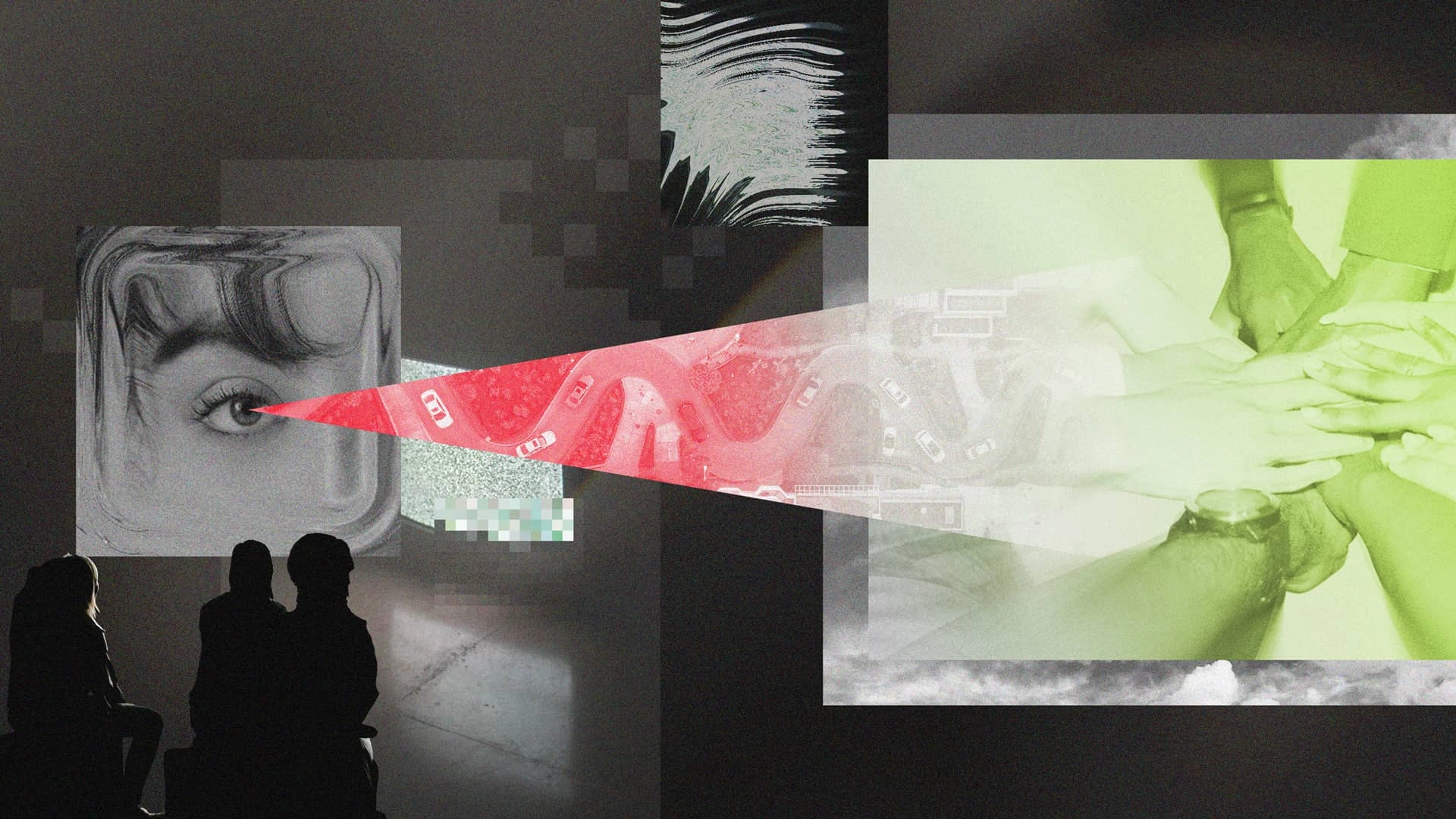When it comes to running experiments, green is the color everyone wants to see. Green means growth, success, and progress. Metrics climb upwards and everyone involved feels like they've contributed to a win. But what happens when you see red? For many teams building their experimentation culture from scratch, negative outcomes can feel like failure. It can be demoralizing, even scary. What if the decision to test was wrong? What do red results say about our ideas or the strategy driving them?
Here’s the reality, though, and it might surprise you. Seeing red isn’t just okay, it’s necessary for building a strong, healthy experimentation culture. The truth is that negative results can be just as valuable as positive outcomes, and in some ways, even more critical for your organization’s growth and decision-making.
Why We Fear Seeing Red
Nobody likes to see a negative impact, especially when all eyes are on an important experiment. It’s human nature to equate success with wins and to write off losses as failures.
Organizations new to experimentation often fall into this trap, which creates an unhealthy aversion to negative results. Teams may avoid testing risky ideas for fear of failure. They may focus solely on “safe bets” that they already feel confident will succeed. Experimentation becomes narrowly focused, stifling creativity and long-term growth.
This fixation on positive outcomes also leads to a serious misconception that negative results are wasted effort. If the experiment didn’t “win,” it didn’t create value. But that couldn’t be further from the truth.
The Hidden Value of Negative Results
When you zoom out and view experimentation through a broader lens, it’s clear that negative results aren’t failures; they’re vital insights that can guide your strategy just as much as, if not more than, positive results. Here’s how:
1. You Learn What Doesn't Work
Red results provide indisputable proof that a particular feature, design, or strategy wasn’t effective. That’s not wasted effort, that’s clarity. Knowing what doesn’t work helps you move forward smarter, ruling out dead ends and narrowing focus on better options. Without red results, your team operates in the dark, relying on assumptions rather than evidence.
2. You Contain the Fall Out
Imagine launching a feature that actively hurts customer experience or drags down key metrics. If left untested, this feature could have rolled out to your entire user base, creating widespread negative impact.
For example, say you run an experiment and discover it causes average order value (AOV) to drop by 15%. Fortunately, this was only exposed to 10% of your user base, so the actual impact is negligible in the grand scheme of things. But imagine if that feature had been launched without testing. You’d now be facing a 15% drop in AOV across your entire user base, stuck digging yourself out of a hole—and worse, without knowing what caused the drop in the first place.
Experiments with red outcomes prevent this exact scenario. They function as a safety net, sparing the organization from damage that would have been far more costly to reverse.
3. You Build a Culture of Learning
Removing the stigma around negative results creates a healthier, more innovative experimentation culture. It shifts the focus from winning to learning, which is where experimentation should thrive. Teams that celebrate all outcomes (not just the green ones) become more comfortable taking big swings and testing bold ideas. This encourages creativity, innovation, and long-term competitive advantage.
When an experiment produces a negative outcome, it reveals something critical–your metrics are responsive to changes in that specific area. And that sensitivity? It's incredibly valuable. It shows you've struck a chord, that customers care enough about this feature or flow to respond to it, even if their reaction wasn't the one you were hoping for.
If your change leads to a significant negative impact, you've uncovered a lever that influences customer behavior. Sure, the lever might be pulling in the wrong direction right now, but you've confirmed that it exists and has an effect. With the right adjustments, you may even be able to reverse its impact into a positive one.
Both negative and neutral results contribute valuable information. Negative outcomes offer clarity: "This direction doesn't work, but this area matters." Neutral results offer a different type of value: they help us better allocate our finite resources, and can often be used to support “ship it” decisions when our desired outcome is just non-inferiority.
The true power of experimentation lies in valuing all outcomes. By reframing failure as learning, teams transform how they approach risk and innovation. This mindset leads to more insightful questions, smarter tests, and products that truly solve customer problems.
4. You Accelerate Experimentation Velocity
Teams that fear negative results often try to pre-filter ideas, launching experiments only when they feel confident they’ll “win.” But this approach slows everything down. The faster you run tests, the faster you get answers. The insights from red and neutral results are often just as valuable as greens when it comes to guiding better experiments. A higher experiment velocity means more chances to find those breakthroughs that truly matter.
The 1/3 Distribution: A Reality Check
If you’re still uneasy about the prospect of seeing a lot of red, consider this: in any experimentation program operating at scale, results typically break down into three parts:
- 1/3 positive (green): These are the “wins” where new ideas drive measurable improvement.
- 1/3 neutral (gray): These show no significant impact, but they help refine your approach moving forward.
- 1/3 negative (red): These experiments fail to meet expectations but illuminate blind spots and prevent costly missteps.
This distribution isn’t anecdotal; it reflects patterns seen across mature experimentation programs. If your results deviate from this balance and skew heavily green, you’re probably not taking enough risks or experimenting ambitiously enough.
This aligns with what industry leaders like Google and Netflix have shared about their own experimentation practices: most tests do not yield measurable improvements, but each outcome (whether green, gray, or red) provides valuable insights for decision-making.
If your results deviate from this balance and skew heavily green, you’re probably not taking enough risks or experimenting ambitiously enough. A healthy experimentation practice embraces all three buckets equally and uses every outcome to drive better decisions.
Flipping the Narrative Around Red Results
To move from reacting emotionally to negative results to leveraging them effectively, organizations need a mindset shift. Here are a few principles to focus on:
- Red results are not failures. They’re a critical step in a broader learning process. Treat them as such.
- Celebrate learning wins. Every result, positive, negative, or neutral, pushes your team closer to understanding your users, products, or strategies better.
- Run more experiments. The more you test, the more valuable insights you’ll gather, even if a significant portion of them are red or neutral.
- Highlight the cost of not experimenting. Launching an untested feature that negatively impacts key metrics is far worse than the temporary sting of an experiment that delivers red results.
A Competitive Advantage Hiding in Plain Sight
Ultimately, companies that fully embrace experimentation, including its less glamorous red (or negative) results, are setting themselves up for long-term success. High-velocity experimentation not only builds a robust culture of learning but also creates strategic advantages:
- You’ll be faster at identifying and acting on opportunities.
- You’ll innovate more effectively because your decisions are rooted in evidence, not assumptions.
- You’ll avoid costly missteps while your competitors might be flying blind.
The faster your organization becomes comfortable with the reality that experiments fail two-thirds of the time, the quicker you’ll unlock the true potential of an experimentation-led culture.
Red Is Part of the Journey to Green
For companies or teams just beginning their experimentation journey, the message is simple: don’t fear the negative outcomes. Lean into it. Understand that it’s an essential part of the process, offering insights that can prevent mistakes, refine strategies, and fuel long-term innovation.
Whether you’re building an experimentation culture from 0 to 1 or a team within an established company is experimenting for the first time, the principle remains the same. The next time you see an experiment result in red or gray, don’t think of it as a setback. Think of it as a valuable insight that steered your team away from the wrong path and closer to the right one. After all, in experimentation, every outcome is a step forward.







